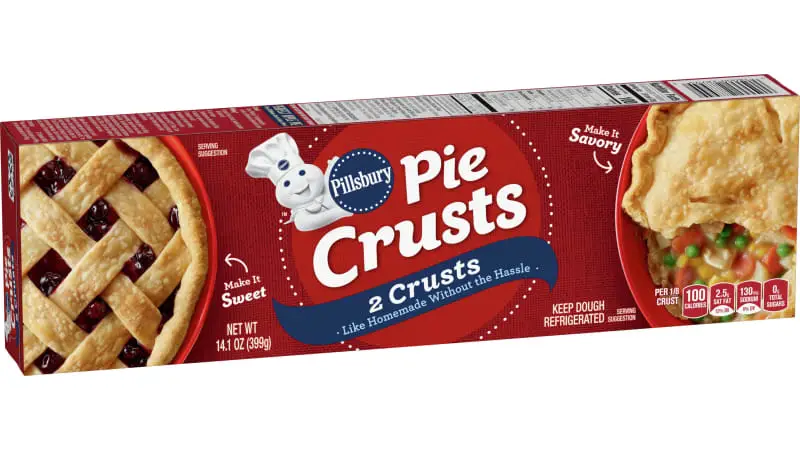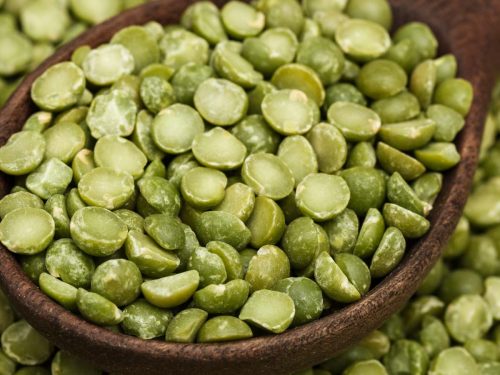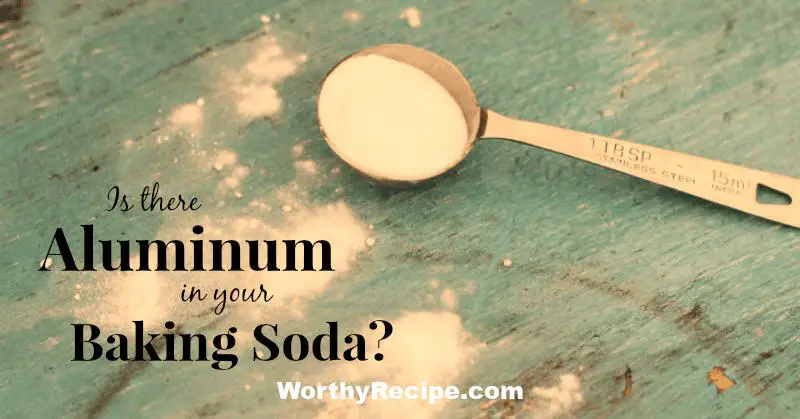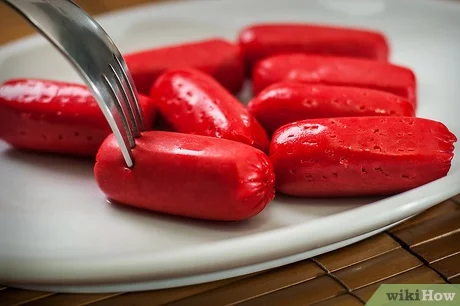Do Baked Pie Crusts Need to be Refrigerated?
Pies have always been a staple dessert in many cultures. From savory pies like shepherd’s pie to sweet pies like apple pie, there are so many variations of this classic dessert. A defining feature of any good pie is its crust; whether it is flaky or crumbly, the crust plays an integral role in the overall taste and texture of the dessert.
The Science of Pie Crusts
Before diving into the question of whether baked pie crusts require refrigeration, it’s important to understand what goes into making a perfect pie crust. The primary ingredients in any pie crust are flour, fat, and liquid. Common types of fats used in pie crusts include butter, shortening, lard, or oil.
The process of making the dough involves mixing the ingredients together until crumbs form; then add cold water to bind it all together. The amount and type of fat used affects the texture and flavor of the pastry. Laminating – folding layers of dough with fat – can also contribute to lightness and flakiness.
Because flour contains gluten, which forms when water is added to it, overworking the dough can lead to tough crusts. It’s essential to keep the gluten formation under control by handling the dough delicately while making sure that there’s enough moisture needed to bind everything together.
Different Types of Pie Crusts
There are many variations when it comes to pie crust recipes; some use only a few simple ingredients while others call for more complex processes and techniques. The following are some examples:
- Basic Pie Crust Recipe: This particular recipe typically uses flour, sugar, salt, butter (or shortening), and water. It’s one of the easiest types of pie crusts to make.
- Shortcrust: Shortcrust is a popular type of pie crust that’s used for sweet and savory pies alike. The key ingredient is “shortening,” which can mean butter, lard, or even vegetable shortening. The ratio of fat to flour is typically 1:2, resulting in a crumbly consistency
- Tart Crust: Tart crusts are similar to shortcrusts but are usually sweeter and more delicate. They’re used for tarts, quiches, and other baked goods.
- Puff Pastry: Puff pastry is made by rolling alternating layers of dough and butter. As it bakes, the butter melts and creates pockets of steam, yielding a light and crisp pastry that’s often used for savory dishes like beef Wellington or chicken potpie.
- Graham Cracker Crust: This kind of pie crust is made from graham cracker crumbs, sugar, and melted butter – but no flour.It’s often used for pies like cheesecakes or anything that needs a little less heft than traditional pastry crust.
To Refrigerate or Not to Refrigerate?
Now that we’ve established the different types of pie crusts let’s tackle the question on everyone’s mind:
Do baked pie crusts need to be refrigerated? Short answer: it depends.
If your pie has an egg-based filling or calls for any kind of dairy cream in the filling or topping such as whipped cream, then it’s highly recommended that you refrigerate it. Eggs contain a lot of moisture and can contribute to bacterial growth if left out at room temperature for too long.
Refrigerating the pie also helps maintain its texture, which can get soggy if left in a warm environment for an extended period. Additionally, dairy products can spoil quickly when exposed to heat and such moist environments.
On the other hand, if your pie has a non-dairy filling like fruit, then it may not need refrigeration. Pies with fruit filling tend to have a lower moisture content than custard-based pies, so they might last longer at room temperature before going bad. However, always remember that fruit pies won’t last as long as custard-based pies- so it’s best to consume them within 24-48 hours.
The risk of spoilage increases with time and warmer temperatures. Therefore, if it’s hot out or if the pie will be sitting at room temperature for over a few hours, it’s best to err on the side of caution and refrigerate it anyway to avoid potential spoilage.
Arguments for Refrigeration
- Microbial growth control: Bacteria thrives between the temperatures of 40 – 140°F / 4 – 60°C. Anything left out at this range for too long is susceptible to microbial growth. Refrigerating your pies takes them out of this range and results in a safer food product.
- Flavor and texture preservation: Refrigeration helps maintain the optimal taste and texture of baked goods by slowing down enzyme activity and preventing staleness. By storing baked pie crusts at a low temperature in an airtight container or freezer bag, you can prolong their shelf-life.
- Human health benefits: Food-borne illnesses from bacteria growth in pies left out on the counter at room temperature can cause intestinal infections, to name a few. Storing pies safely in a refrigerator or freezer instead can potentially reduce the risk of food poisoning.
Arguments against Refrigeration
- Risk of soggy crusts: Moisture from condensation can make pie crusts soft and mushy when stored in the fridge or freezer.
- Loss of texture due to drying out: Refrigeration will also remove moisture from pastry, causing it to become dry and unpleasant to eat when reheated.
Factors that Affect Pie Crust Storage
There are several factors that impact how you should store your baked pie crusts. Some of these factors include the type of filling used, method of baking the pie crust, and relative humidity levels in your storage area.
Type of Filling Used
Egg-based fillings or dairy cream-based toppings such as whipped cream tend to spoil much faster than any non-dairy fillings. Fruit fillings typically last longer than custard-based ones- but everyone should use their best judgment is still recommended.
Method of Baking the Pie Crust
If you partially pre-bake your crust for a custard-like filling or blind bake it for a fruit filling as mentioned earlier, then storing refrigerated is generally recommended. This method may result in drier, less soggy pies that slice neatly out of the pan.
Humidity Levels in the Storage Area
The moisture level in your storage area will affect how long your pie lasts. High humidity can lead to spoilage and mold growth, while low humidity could potentially dry out your pastry. If you live in an area with high humidity, refrigeration or freezing is preferable.
Guidelines for Storing Baked Pie Crusts
The shelf life of a pie crust depends on the storage method. Below are some guidelines to properly store baked pies:
Short-term Storage options
- Room temperature storage: If you want to enjoy your pie within the next few hours, it’s okay to leave it out at room temperature – provided the filling can safely withstand this condition of no more than two hours. When storing pies at room temperature, it’s best to keep them in a cool, dry place away from direct sunlight or heat sources.
- Refrigeration: After baking, allow your pie to cool down to room temperature before placing it in the refrigerator or freezer. Wrap it tightly using aluminum foil or plastic wrap to ensure no exposure to air and keep it fresher longer. Make sure that there is enough space inside the refrigerator; never store pies next to other food items that have strong odors as they can absorb flavors quickly.
Long-term Storage options
- Freezing: Baked pie crusts can be frozen for up to six months if done correctly. The best way to freeze a baked pie crust is first to wrap it tightly in plastic wrap and then aluminum foil – before placing it inside an airtight container or freezer-safe bag. Be sure to date the packaging and make sure it is stored in the back of the freezer where temperatures are most consistent.
Methods for reheating a stored/cold pie
If your pie has been refrigerated or frozen, it’s best to take it out about 30 minutes before reheating or popping in the oven to avoid potential cracking. Molded plastic lids reduce freezer burn and refrigeration dehydration which can cause cracking. To reheat, preheat your oven to 375°F/190°C and place the pie on a baking sheet lined with aluminum foil or parchment paper. Reheat for about 15-20 minutes or until the crust turns golden brown.
How to Tell If Your Pie Crust is Spoiled
It’s always better to stay on the safer side since pie crust spoilage could have severe consequences. Here are some signs of bad pie crust:
- Soggy texture:If your pie crust doesn’t feel crispy anymore and has an unpleasant texture, it’s a clear sign of spoilage and can be risky to eat.
- Mold growth: Any kind of visual mold growth clearly indicates spoilage. Throw away any pies that develop mold, including surface mold and hidden molds in baked meals.
- Rancid smell:If the pastry gives off an odd, cheesy, sour odor, it may indicate rancidity from the high fat content of butter or oil used in making the pastry.
Conclusion
Pie crusts play an essential role in building a perfect dessert, and its storage requirements should never be taken lightly. For optimal taste and freshness, refrigerate all pies containing egg or dairy-filling. On the other hand, non-dairy fillings can last longer at room temperature but still require careful attention when determining safety thresholds for eating. Proper storage guidelines paired with proper reheating techniques ensures that you can enjoy this classic dessert without the fear of spoilage.
The most important thing to remember is pie storage guidelines are not one-size-fits-all. Different types of crust and fillings come with varying shelf lives, which should always be considered when making a storage decision. Trust your instincts and always check for signs of spoilage before consuming or storing your pies.
Frequently Asked Questions
FAQs on Baked Pie Crusts Refrigeration
Can I leave my baked pie crusts out in the open after baking?
Absolutely not! You need to refrigerate your baked pie crusts to prevent bacterial growth and to ensure food safety. Leaving them out on the counter can lead to spoilage and foodborne illnesses.
How long can I store my baked pie crusts in the refrigerator?
You can store your baked pie crusts in the refrigerator for up to 3-4 days. Make sure you cover them with plastic wrap or aluminum foil to keep them from drying out.
Can I freeze my baked pie crusts?
Yes, you can! Baked pie crusts freeze well when stored in an airtight container or sealed in a freezer-safe bag. They can be frozen for up to 2-3 months before using.
Why do I need to refrigerate my baked pie crusts?
Refrigeration slows down bacterial growth, which can cause spoilage and foodborne illnesses. It also keeps your pie crusts fresh and crispy. If you plan on serving your pies later, refrigerating them is a must.







